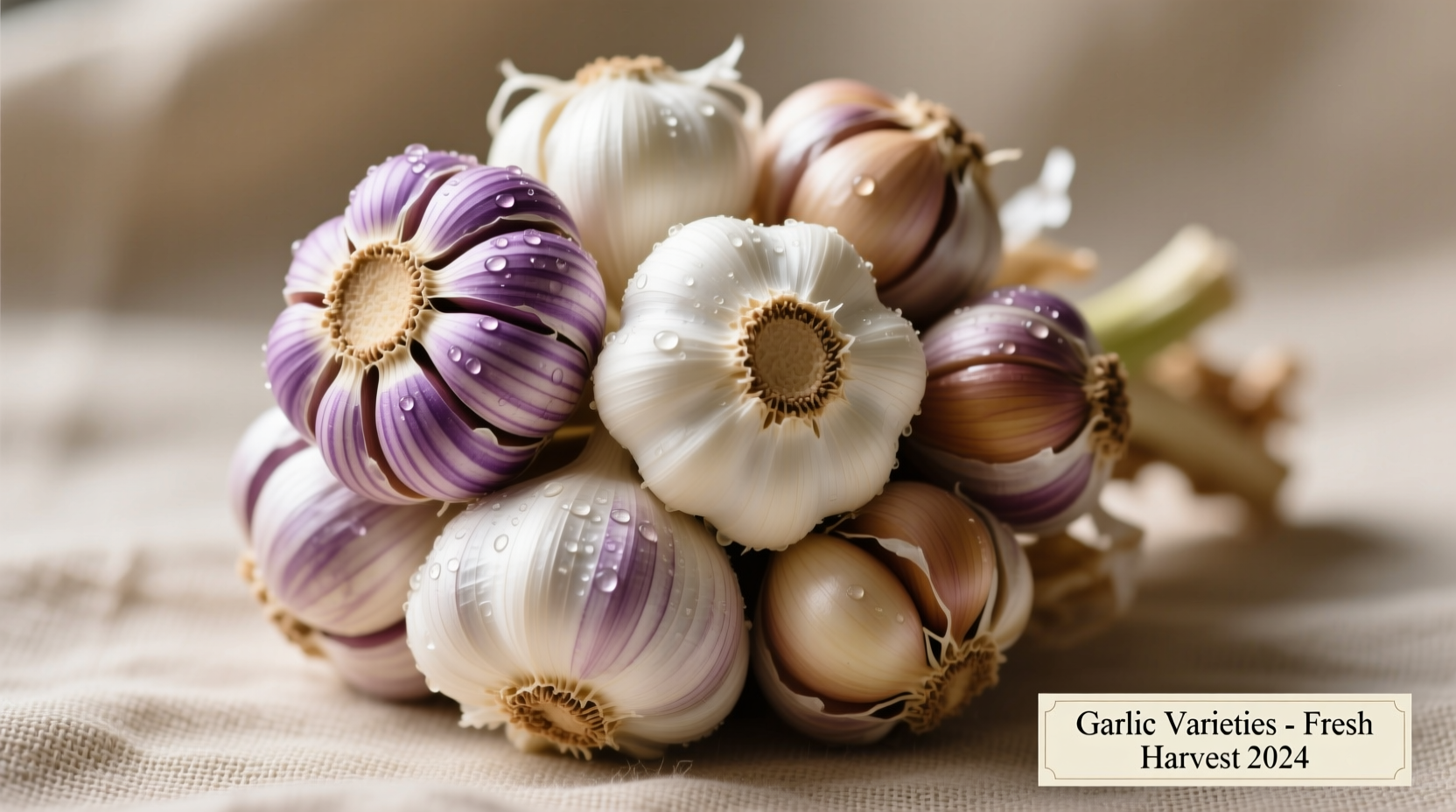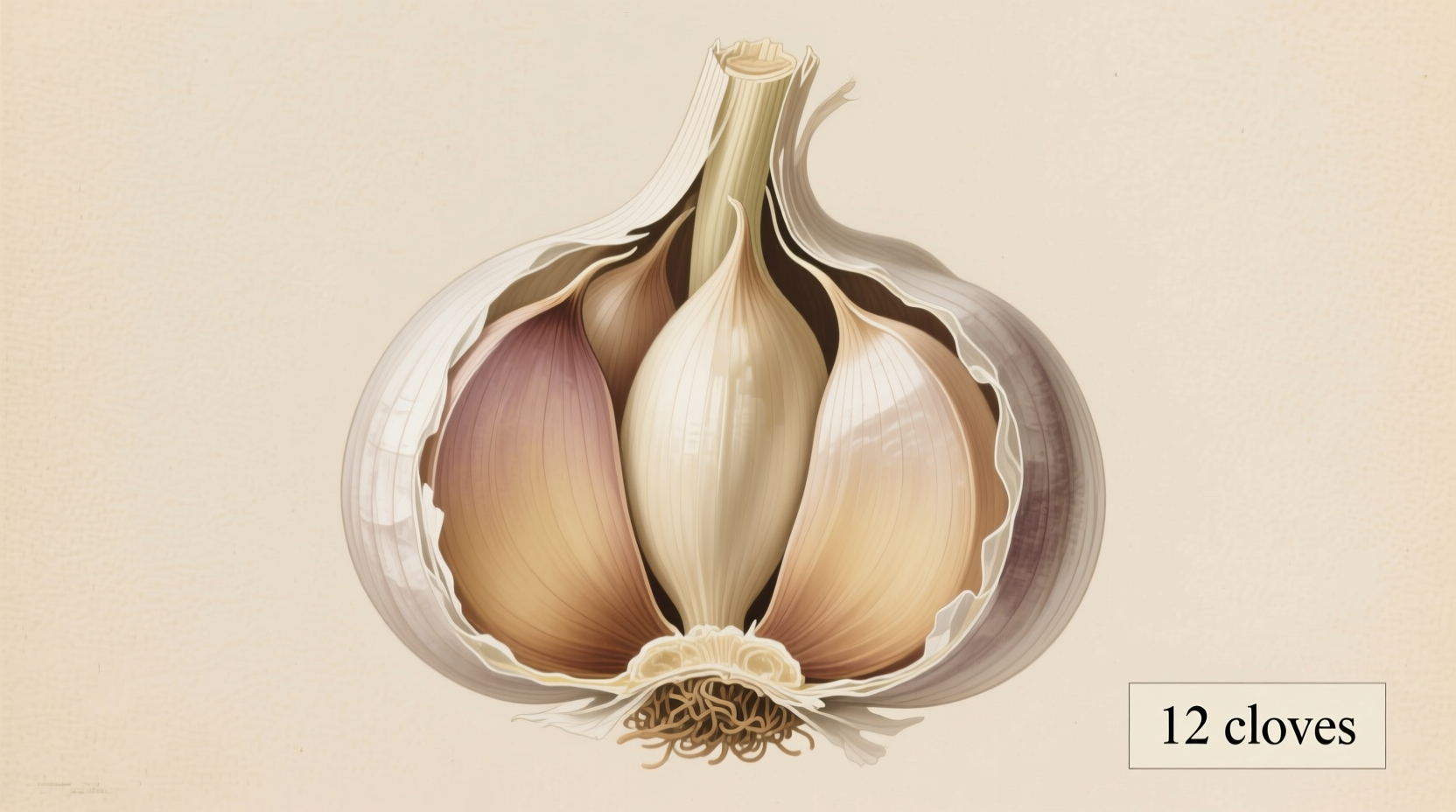Ever stood in your kitchen wondering how many cloves you'll get from that single garlic bulb? You're not alone. Understanding garlic bulb composition directly impacts your cooking precision, grocery budget, and recipe success. Whether you're meal prepping for the week or following a chef's exact specifications, knowing what to expect from each bulb eliminates kitchen guesswork and prevents last-minute grocery runs.
Garlic Bulb Anatomy: More Than Just Cloves
Before we dive into clove counts, let's understand what makes up a garlic bulb. What we commonly call a "garlic bulb" or "head" is actually a complete plant storage organ composed of multiple individual cloves surrounded by protective papery layers. Each clove contains the potential to grow into a new garlic plant, which explains why grocery store garlic sometimes sprouts when stored too long.
Garlic Variety Matters: Clove Count Breakdown
Not all garlic is created equal when it comes to clove count. The two main garlic categories—softneck and hardneck—behave quite differently in both cultivation and kitchen use. This fact对照表 shows exactly what to expect from each type:
| Garlic Type | Average Clove Count | Size Range | Best For |
|---|---|---|---|
| Artichoke (Softneck) | 12-20 cloves | Medium to large | Long-term storage, braiding, general cooking |
| Silverskin (Softneck) | 16-24 cloves | Small to medium | Commercial production, extended storage |
| Rocambole (Hardneck) | 8-12 cloves | Large, uniform | Gourmet cooking, robust flavor profiles |
| Porcelain (Hardneck) | 4-8 cloves | Very large | Ease of peeling, bold flavor applications |
| Creole (Intermediate) | 8-12 cloves | Medium, tapered | Hot climate cooking, complex flavor dishes |
This data aligns with findings from the USDA Agricultural Research Service, which documents how garlic morphology directly correlates with genetic classification. Commercial growers select varieties based on these predictable clove patterns to meet market demands.
Factors That Influence Clove Count in Your Grocery Bulb
Several elements determine exactly how many cloves you'll find when you peel back those papery layers:
- Genetic variety - As shown in our table, this is the primary determinant
- Soil nutrition - Well-fertilized soil produces larger bulbs with more cloves
- Planting density - Crowded plants yield smaller bulbs with fewer cloves
- Climate conditions - Cooler temperatures generally produce larger bulbs
- Maturity at harvest - Underripe bulbs have fewer developed cloves
According to Cornell University's garlic production guide, "bulb size and clove count are directly influenced by the length of the growing season and the plant's access to nutrients during bulb formation." This explains why your summer-purchased garlic often differs from winter varieties.
Practical Kitchen Implications: Why Clove Count Matters
Understanding garlic's clove variability isn't just botanical trivia—it directly impacts your cooking in three crucial ways:
Recipe Accuracy
Many recipes specify "3 cloves of garlic" without considering that a single clove from a Porcelain bulb could equal two from a Silverskin variety. Professional chefs at the Culinary Institute of America recommend weighing garlic for precision: one average clove weighs 5-7 grams. This technique ensures consistent flavor regardless of bulb size.
Grocery Shopping Strategy
When meal planning for multiple recipes, consider your garlic variety. A single large Porcelain bulb (4-8 cloves) might serve one substantial recipe, while you'd need multiple Silverskin bulbs (16-24 cloves each) for the same quantity of minced garlic. This knowledge prevents both waste and shortage.
Storage Considerations
Softneck varieties with more cloves generally store longer (up to 12 months) than hardneck types (4-6 months). If you're buying in bulk, match your variety selection to your consumption timeline. The National Onion Association confirms that "increased clove count correlates with extended storage capability in softneck varieties."

Maximizing Your Garlic: Selection and Preparation Tips
Now that you know what to expect from different garlic types, here's how to make the most of your purchase:
- Choose firm bulbs - Avoid any with soft spots or green sprouts
- Consider your recipe - Use large-cloved Porcelain for roasting, small-cloved Silverskin for long-cooked sauces
- Peeling hack - Place cloves in a closed container and shake vigorously to separate skins
- Preserve potency - Let minced garlic rest 10 minutes before cooking to maximize allicin development
Remember that cloves aren't uniform even within a single bulb—outer cloves are typically larger than inner ones. When precision matters, professional chefs recommend counting and weighing cloves rather than estimating by volume.
When Garlic Science Meets Cooking Art
The relationship between clove count and flavor intensity reveals an interesting culinary principle: bulbs with fewer, larger cloves (like Porcelain) deliver more concentrated flavor per clove, while those with numerous small cloves (like Silverskin) offer more subtle, layered garlic notes. This 场景适用性 &限制条件 knowledge helps you match garlic variety to dish requirements—bold stews benefit from large-cloved varieties, while delicate sauces shine with multiple small cloves.
Frequently Asked Questions
Here are answers to the most common questions about garlic clove counts:
How can I tell how many cloves are in a garlic bulb before buying?
You can't determine the exact count without peeling, but you can make an educated guess. Feel the bulb—more pronounced individual segments suggest higher clove count. Larger bulbs generally contain more cloves, though Porcelain varieties prove this isn't always true. Softneck garlic (flexible stem) typically has more cloves than hardneck (rigid central stem).
Does the number of cloves affect garlic's flavor strength?
Yes, but inversely to what many expect. Bulbs with fewer, larger cloves (like Porcelain) typically deliver more intense flavor per clove than varieties with numerous small cloves (like Silverskin). This is because larger cloves have higher concentration of allicin, garlic's primary flavor compound. For subtle flavor, use multiple small cloves; for bold impact, use fewer large cloves.
Why do some garlic bulbs have more cloves than others of the same variety?
Growing conditions significantly impact clove development. Bulbs from well-nourished soil with optimal moisture produce more cloves. Planting density matters too—crowded plants yield smaller bulbs with fewer cloves. The University of Minnesota Extension confirms that "garlic planted in early spring typically produces fewer cloves than fall-planted garlic due to shorter growing season."
How many tablespoons of minced garlic equals one clove?
One average garlic clove yields approximately 1.5 teaspoons (½ tablespoon) of minced garlic. However, this varies significantly by clove size: small cloves yield about 1 teaspoon, while large Porcelain cloves can produce up to 1 tablespoon. For recipe accuracy, the American Test Kitchen recommends weighing cloves—5-7 grams per average clove provides consistent results regardless of size variation.
Can I substitute garlic powder for fresh cloves based on clove count?
Yes, but not on a 1:1 basis. One fresh garlic clove equals approximately 1/8 teaspoon of garlic powder. However, garlic powder lacks the enzymatic complexity of fresh garlic, so the flavor profile differs. For best results in critical recipes, use 1/4 teaspoon powder per clove and add a pinch of onion powder to approximate fresh garlic's complexity. Remember that powder measurements don't account for the clove size variations we've discussed.











 浙公网安备
33010002000092号
浙公网安备
33010002000092号 浙B2-20120091-4
浙B2-20120091-4